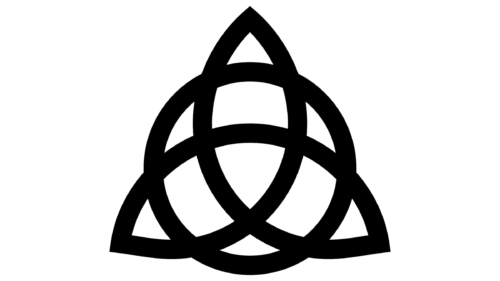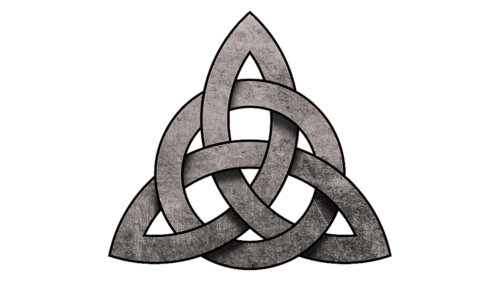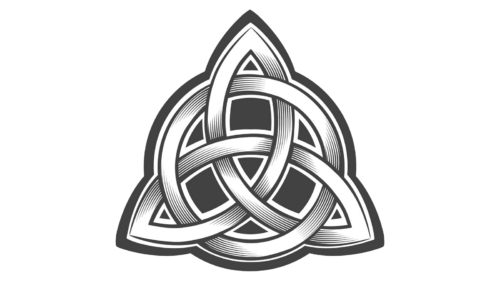Celtic symbols, intricately woven into the fabric of ancient Celtic culture, are much more than mere decorative motifs. They are profound representations of the beliefs, values, and philosophies of the Celts. Among these symbols, a few have gained significant attention due to their unique designs and the enigmatic meanings behind them. For instance, the Celtic Cross, with its distinctive ringed structure, represents the synthesis of earthly and celestial realms. Another example is the Claddagh ring, a symbol of love, loyalty, and friendship, often used in wedding bands and friendship tokens. These symbols, each carrying a story, are a window into the ancient Celtic world, yet they represent just a fraction of the intriguing world of Celtic symbols.
The Triquetra, or the Trinity Knot, stands out as a particularly significant symbol within this rich symbolic heritage. Originating from the Latin ‘Triquetrus’, meaning ‘three-cornered’, the Triquetra consists of three interconnected arcs. It is fascinating not only because of its geometric beauty but also due to the various interpretations and meanings ascribed to it across different cultures and eras. Although it is also found in Norse and Indian cultures, its integration within Celtic art is particularly profound.
The allure of the Triquetra lies in its symbolic flexibility. In Christian contexts, it is often interpreted as a symbol of the Holy Trinity – Father, Son, and Holy Spirit. However, in the pre-Christian Celtic world, it is thought to have symbolized life’s primary elements like earth, water, and air, or the triple goddess (maiden, mother, crone) in various pagan traditions. Its presence is evident in numerous Celtic artifacts, with notable examples including its depiction in the Book of Kells, an ancient illuminated manuscript showcasing the pinnacle of Celtic artistry.
The Triquetra has not only been a subject of interest in historical studies but has also found its way into contemporary media. It gained renewed popularity through its use in the TV series “Charmed”, where it symbolized the unbreakable bond and collective power of the three protagonist sisters, each a witch with unique powers.
The enduring appeal of Celtic symbols, especially the Triquetra, is a reflection of their deep-rooted symbolism and ability to transcend simple artistic expression. These symbols encapsulate the Celts’ deep reverence for nature, their profound spiritual insights, and their understanding of the intricate web of life and existence.
Let’s delve deeper into the facets of the Triquetra with this expanded list:
- Represents unity and eternal spiritual life; the unbroken line symbolizing uninterrupted life cycle.
- Symbolizes elements of nature and life stages in various interpretations, adapting to cultural contexts.
- Used extensively in Celtic art, adorning manuscripts, metalworks, and stone carvings.
- Interpreted in Christianity as a symbol of the Holy Trinity, demonstrating the symbol’s adaptability.
- Its design is a testament to the Celts’ expertise in creating intricate and meaningful art.
- Continues to inspire modern designs and is popular in jewelry, tattoos, and pop culture references.
The Celtic symbols and their meanings are not just historical artifacts; they are living representations of an ancient culture’s wisdom and artistic prowess. The Triquetra, with its timeless design, stands as a powerful symbol of the interconnection of all life and the perpetual nature of the spirit. Its ability to convey complex spiritual concepts in a simple form has allowed it to endure through centuries, maintaining its relevance and fascination today.
Triquetra Tattoo
In recent years, the Celtic Triquetra has found a new and popular expression as a tattoo, resonating deeply with individuals seeking a design that is both visually striking and rich in symbolism. The Triquetra tattoo, with its intertwined loops and unbroken lines, not only makes for an aesthetically pleasing design but also carries a depth of meaning that appeals to a wide range of people. This tattoo is often chosen by those who wish to embody the concepts of eternity, interconnectedness, and balance in their lives. Its design is versatile, making it suitable for various placements on the body, and it can be either a small, discreet emblem or a large, detailed piece.
The adaptability of the Triquetra tattoo in representing personal beliefs and values is one of its most appealing aspects. For some, it symbolizes spiritual growth and the eternal cycle of life and death. For others, it represents the bond of family, friendship, or love, encapsulating the unity and strength of these connections. In a broader sense, the Triquetra can be a reminder of the balance and harmony in the universe, embodying the principle that everything is interconnected and interdependent.
Furthermore, individuals who are of Celtic heritage often choose the Triquetra tattoo as a way to honor and connect with their roots. It serves as a bridge to their ancestral past, a celebration of their cultural heritage. Additionally, its presence in modern pop culture, as seen in movies and TV shows, has added to its popularity, making it a trendy choice for those who resonate with its aesthetic and symbolic significance.
In essence, the Celtic Triquetra tattoo stands as a powerful personal emblem, blending ancient symbolism with contemporary relevance. It’s a visual expression of one’s beliefs, values, and heritage, making it a deeply personal and meaningful choice for a tattoo. Whether as a simple design or an elaborate piece of art, the Triquetra tattoo continues to captivate and inspire, carrying with it the enduring legacy of Celtic art and symbolism.









